Sound Giants: From the “Wall of Sound” of the Grateful Dead to the Trials of the Orion
Huge acoustic structures can hardly be called innovation. It became widely known about them after the construction of the first “Wall of Sound”, created by the sound engineer and sound producer of the Grateful Dead group, Owsley (Bear) Stanley in 1973. Subsequently (sometime since the beginning of the 80s), the Walls of Sound gradually disappeared from the concert venues, giving way to more pragmatic audio systems.

Despite the concert impracticality, niches are still found for such giants. Gigantic audio equipment, combining a huge number of emitters and powerful amplifying devices, have enormous sound pressure. Today, striking the imagination of the townsfolk, audiomonstry build for various kinds of competitions (often in car audio), as exhibition concepts, surprising with its parameters, as well as for use in industrial testing.
In this post I will describe the history and current state of this segment of sound engineering.
One of the first acoustic superstructures is considered to be the wall of the sound of the Grateful Dead band, which first appeared on the band’s performance in 1973. As we noted at the beginning of the material, the acoustic design was developed by the sound engineer of the gang of Osley (Bear) Stenley during the period when this remarkable man intensively experimented with lysergic acid diethylamide, mescaline and other psychoactive substances. An interesting fact is that Medved was not only the group's sound engineer, but also a person who partially financed "grateful dead", and also supplied them with one of the "creative elixirs", the very LSD-25. The substance (remained semi-legal in the United States until 1975), an enterprising chemist-engineer himself produced, consumed and sold at a profit.
A prerequisite for the creation of a stage audiomonstra was the then-popular principle of studio recording with the same name “The Wall of Sound”, which was invented by another prominent figure in American sound engineering, sound producer and star killer Phil Spector. Recording the Beatles album “Let It Be”, Spector applied the original recording method, in which all instruments were recorded at once (instrument signals were fed to the recording room through the instrument room, and then recorded on a magnetic tape). Only Paul McCartney didn’t like the result, but he was impressed with the rest of The Beatles, the vast majority of sound engineers of that time. Among others was the Bear.

Phil Spector
The legend of “The Wall of Sound” says that in one of the psychiatric journeys of 1969 (held in Novato, California, where he rehearsed the band), at the height of the “enlightened” discussions about sound, Bear had a brilliant idea to repeat Spector's “Wall” effect on the stage site.
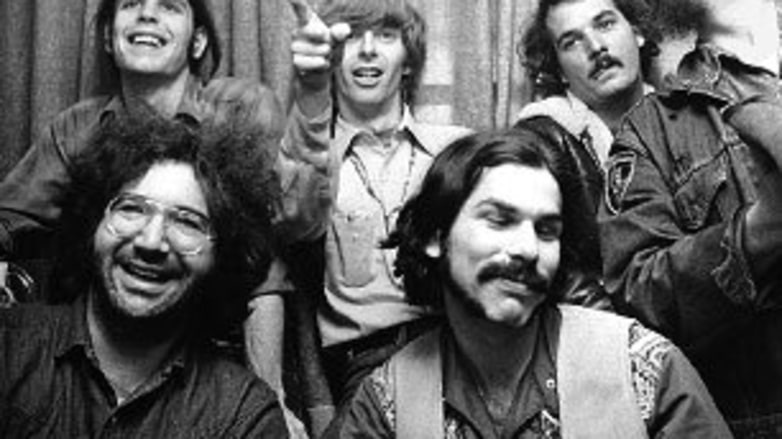
Grateful dead
It was like this, Bob Weir, Jerry Garcia and Phil Lesch, Medved and a few devoted admirers of Dead, gathered at the rehearsal base and began to discuss the useless possibilities of the sound equipment that existed then. As soon as the discussion "turned" in the direction of live performances, it dawned on Medved, who was silent before, interrupting the crowd, said:
At that moment, no one took the proposal seriously, but the principle itself, when listeners and musicians receive sound from one source, impressed the audience.This acid trash and waste This psychedelic experience was the starting point for the construction of an unprecedented structure - the first "Wall of Sound".
There is also a more prosaic version of the idea of creating "Wall of Sound". One of the objective prerequisites for creating your own concert sound system and building the "wall" was the unsuccessful performance of the band at the Woodstock Music & Art Fair festival, in the same 1969 year. Then the problems with the equipment significantly influenced the performance and the perception of the team by the public.
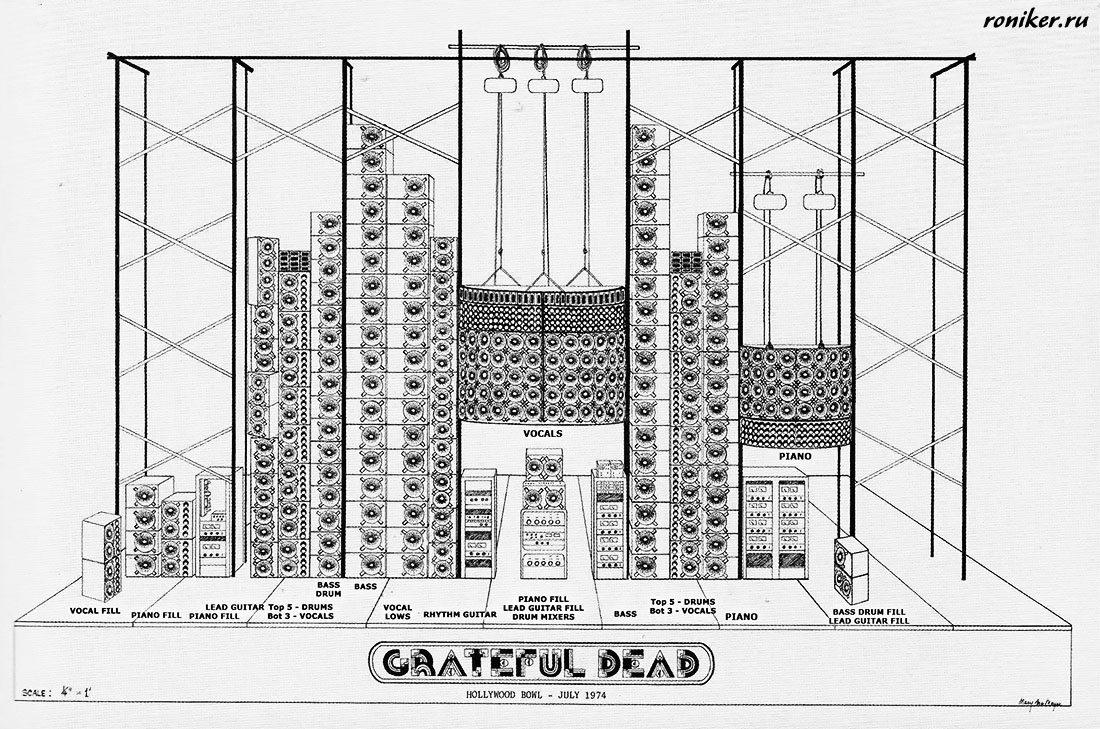
Did everything happen because of LSD-revelations of the Bear or as a result of analyzing the mistakes of the Woodstock engineers, but by 1972, Osley (the Bear) Stanley completed the design of the Wall. Rick Turner, Ron Vikershem and John Karl also took part in the development of the facility. By 1973, the year the Wall was erected.
Hulk RMS was equal to 26,400 watts. The Wall made it possible to create a sound pressure of 103 dB at a distance of ½ mile (0.8 km). The musicians performed in front of the wall and did not use monitors. Thus, as Bear intended, the sound was a single whole - the same for the people, in front of the stage and for the musicians on it. As if the participants of the collective have not deafened the mind, I will not apply, but the fact remains.

89 transistor (RMS each 300 W) and three tube (RMS - 350W) McIntosh amplifiers became the amplifier “core” systems. These were the legendary McIntosh MC-2300 (as a “stone” panoramic base) and the no less legendary McIntosh MC-3500 (as a “warm” lamp supplement).

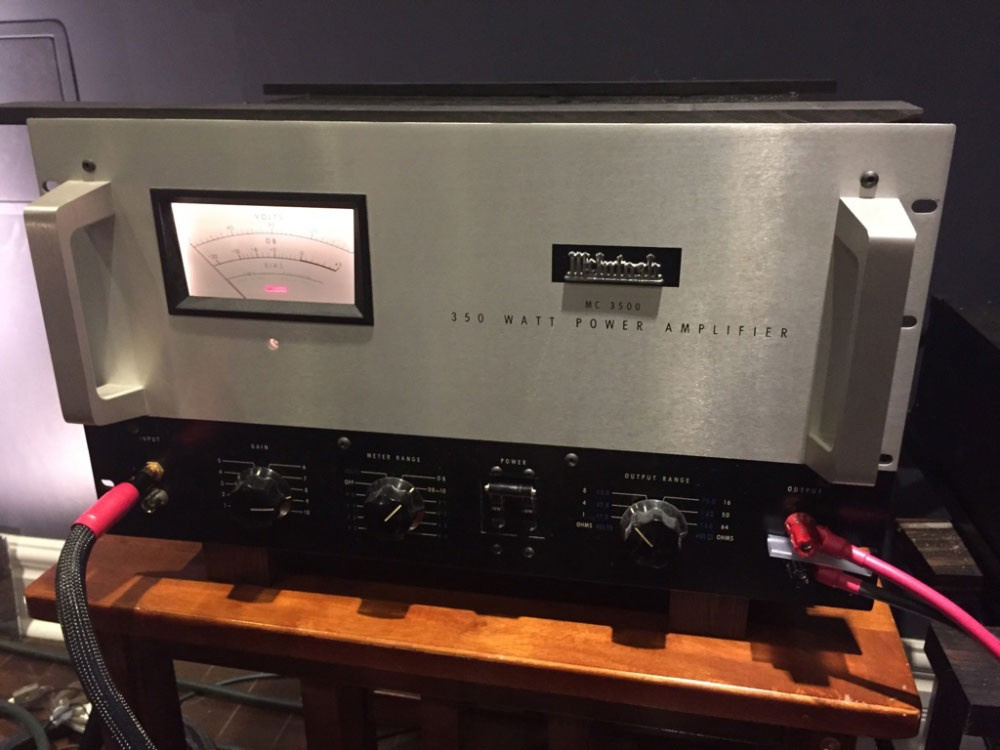
The Walls cabinets also used 586 speakers manufactured by JBL , woofers (15 inches), low-pass signals (12 inches) and microwave frequencies (5 inches), as well as 54 Electrovoice tweeters. All this splendor was loaded with 11 independent amplification channels, 2.4 kW each. The four-band separation of the signal, like some modern hi-fi speakers, began before amplification, i.e. actually used the active crossover circuit.
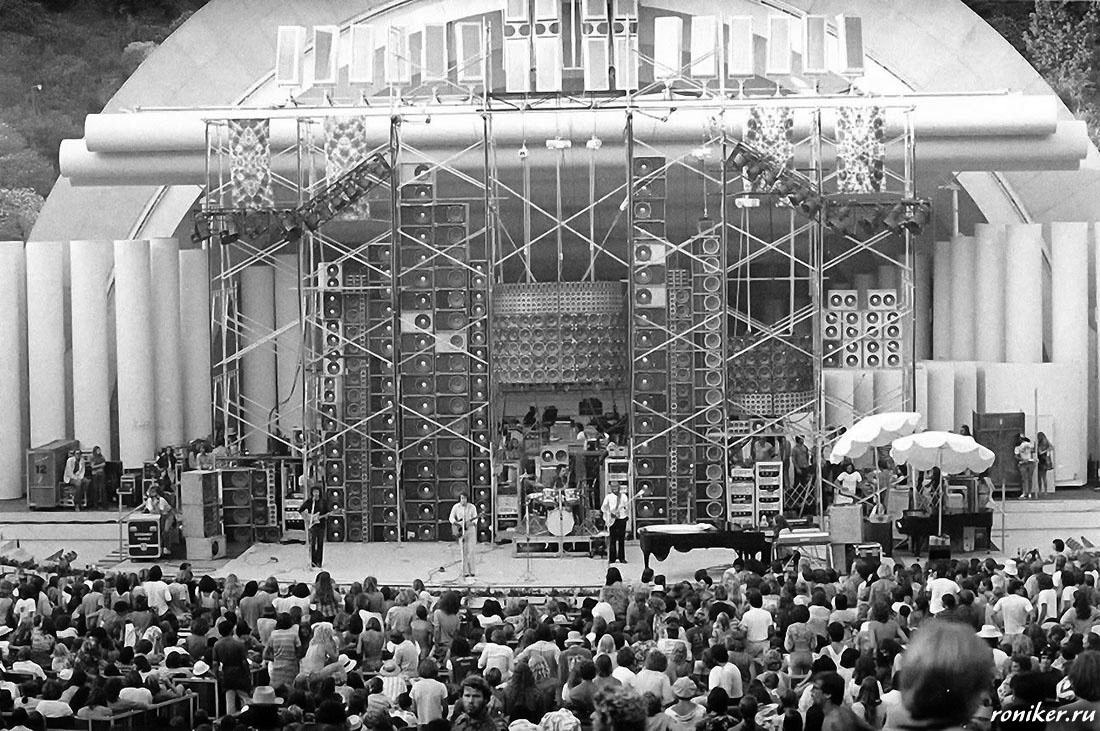
To prevent microphone-to-speaker feedback and the formation of a natural reverberation effect, the concert platform was equipped with low-sensitivity duplicated condenser microphones (the backup microphone was placed 60 mm from the main one and rotated 180 degrees in phase to the speakers. The vocalist had to sing as close as possible to this the spark so as not to increase the sensitivity. According to the musicians, this decision was more tedious than using a traditional dynamic microphone (perhaps This is the only drawback of the system, which team members noted.
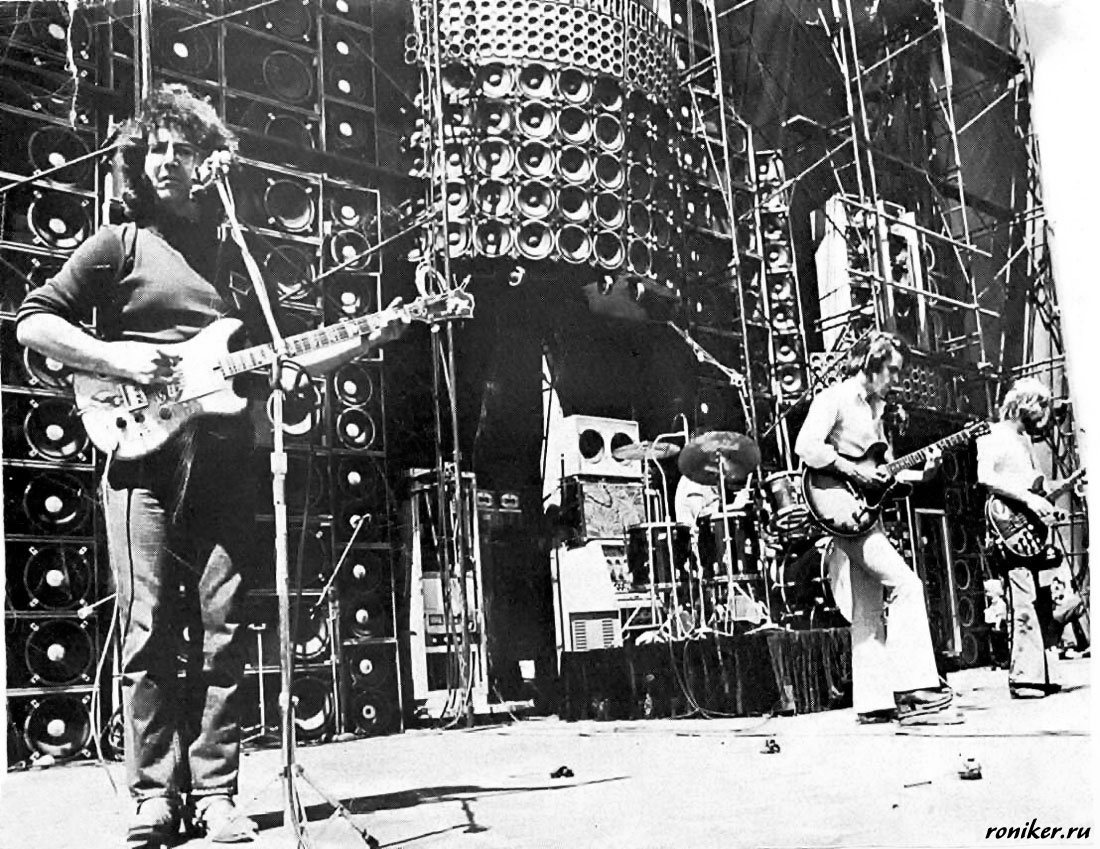
The Wall of Sound at the time of its appearance was the most powerful concert speaker system on the planet. For comparison, the legendary The Beatles used for performances concert systems with a capacity of not more than 800 W, and at the largest for that time rock festival Woodstock Music & Art Fair until the end of the 70s, the power of the sound system did not exceed 4 kW. After its appearance, the Wall improved and grew, the building reached a height of 10 meters and weighed several hundred tons by the end of 1976.
The “Wall of Sound” was used by the “dead” until the early 80s, when the group found its use impractical, due to the appearance of more sophisticated and convenient solutions.
Despite the almost universal rejection of gigantic sound structures in the 80s, some events simply could not do without them. This happened to the Monsters of Rock festival in Derbyshire (United Kingdom), which was held from August 19th to 22nd, 1988. The festival participants, including Metallica, Van Halen, KISS, David Lee Roth, Megadeth, Guns `N` Roses, Helloween and Iron Maiden, wanted to perform really powerfully in front of a large audience, 107,000 spectators came to the festival.
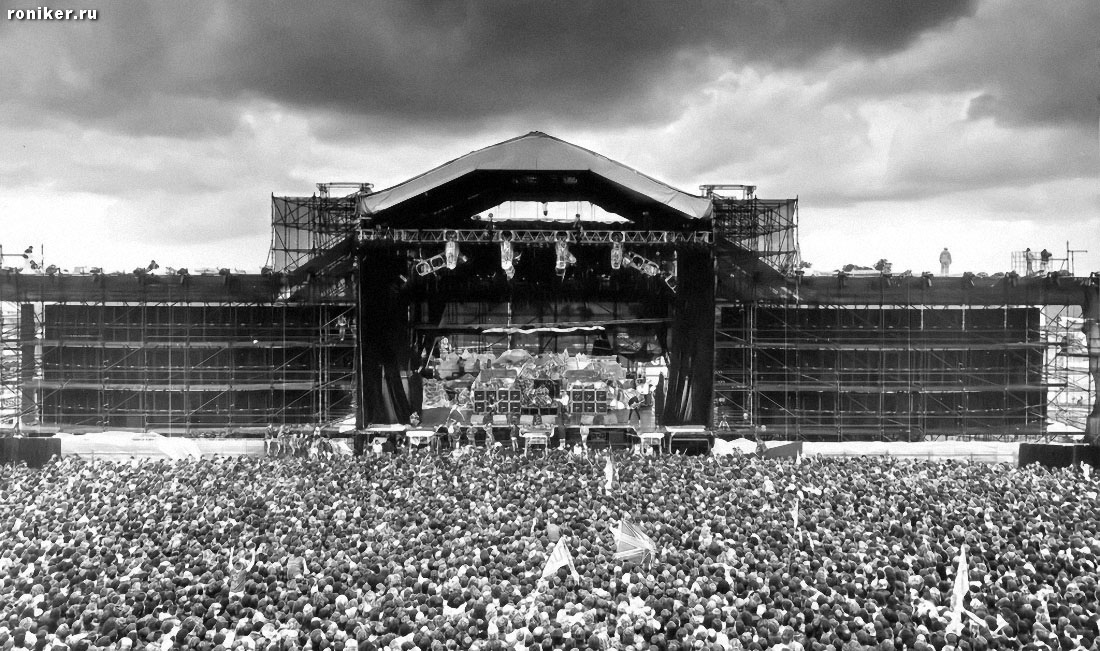
For this, an acoustic structure of 45 (150 feet) length and 10 meters (35 feet) height was built, which had a total RMS of 523,000 W (indicated not by the maximum, but by the software operating power) and provided a sound pressure of 100 dB at a distance of 1.7 miles away Measurements of SPL (sound pressure) during the Iron Maiden performance showed a value from 118 dB to 124 dB at a distance of 90 m from the sound source, peak values reaching 140 dB.
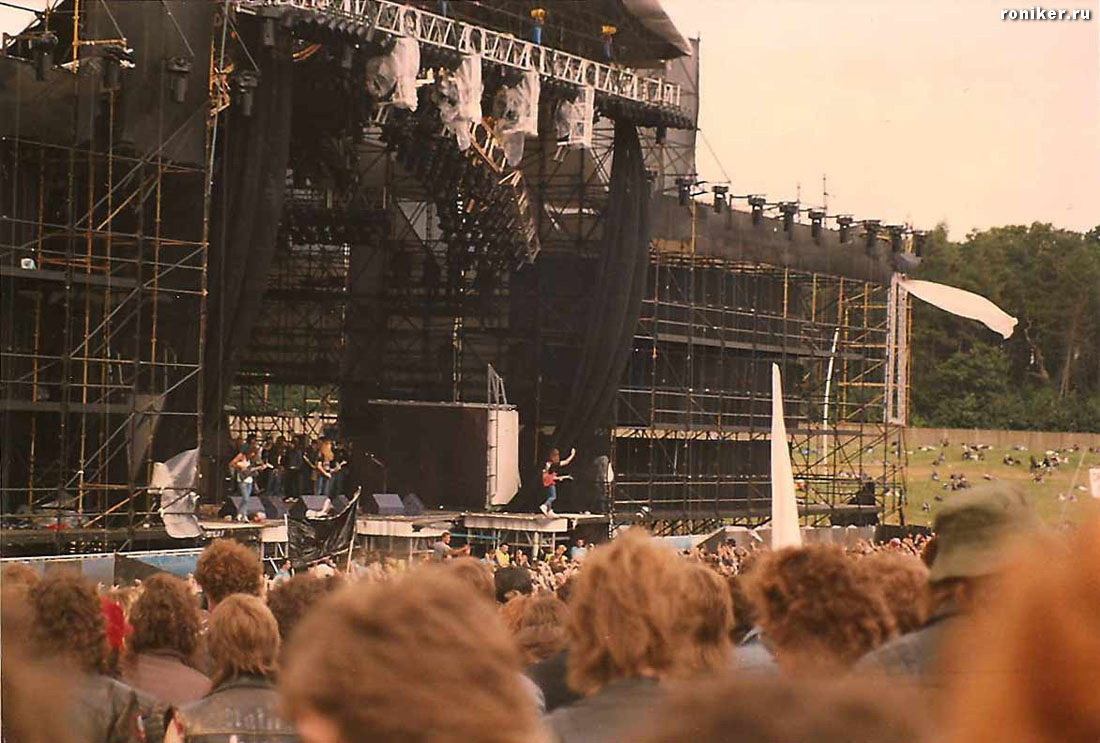
The system includes - 300 TMS-3 cabinets and 60 TSW-124 subwoofers, loaded with 460 separate QSC and BSS amplification channels, divided into 4 bands. All speakers were manufactured by Turbosound. More than half of the equipment belonged to the Iron Maiden group. The logical result was the introduction in 1990 of this hulk into the Guinness Book of Records, as the biggest sound system ever sounding.
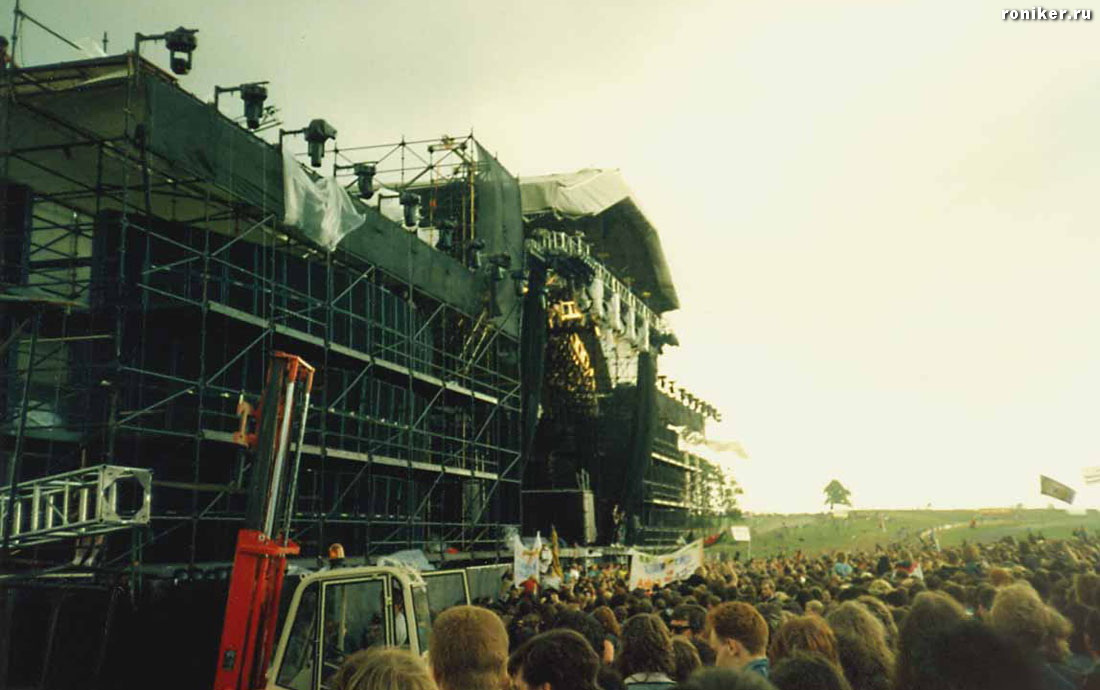
One of the prominent developments in the field of super-powerful sound systems a few years ago appeared at the famous American company McIntosh , as is the case with the wall of sound, the DESPACIO project was the fruit of a collaboration of engineers and musicians. The next colossus sound was designed by James Electroclashes from the LCD Soundsystem electric clash project in collaboration with the sound engineer from Jordan Acoustics (McIntosh distributor in the USA).
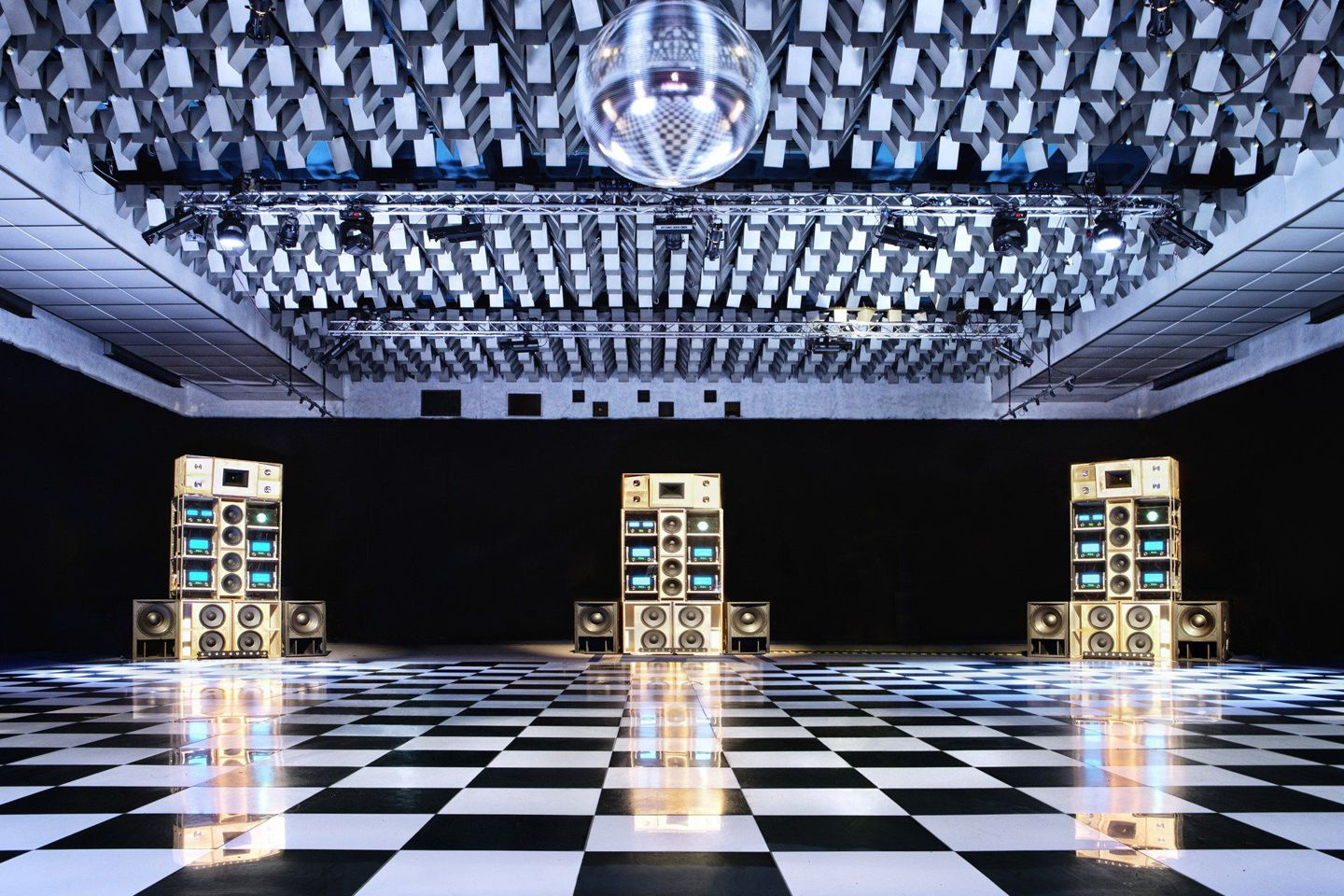
According to the authors of the project, they developed a sound system with a total power of 55,000 watts to preserve the old traditions of live performances. Murphy and Mac engineers emphasize that they have doubled the power of the Wall of Sound of the Greatful Dead. The system consists of 7 cabinet racks, about 4 meters high. The total mass of the gain system is 4.5 tons. Underlining the conceptual continuity with the “dead”, McIntosh held the first presentations of the system at New Century Hall, which is decorated in the style of the late 60s and early 70s.
At WOMAD 2014, true high end legends, Bowers & Wilkins presented their heavy-duty building with the pathetic name of Society of Sound. The system was designed on the basis of a combination of classic bass-reflex subwoofers with three-way cabinets (Mid-bass, MF, HF) made of birch plywood.
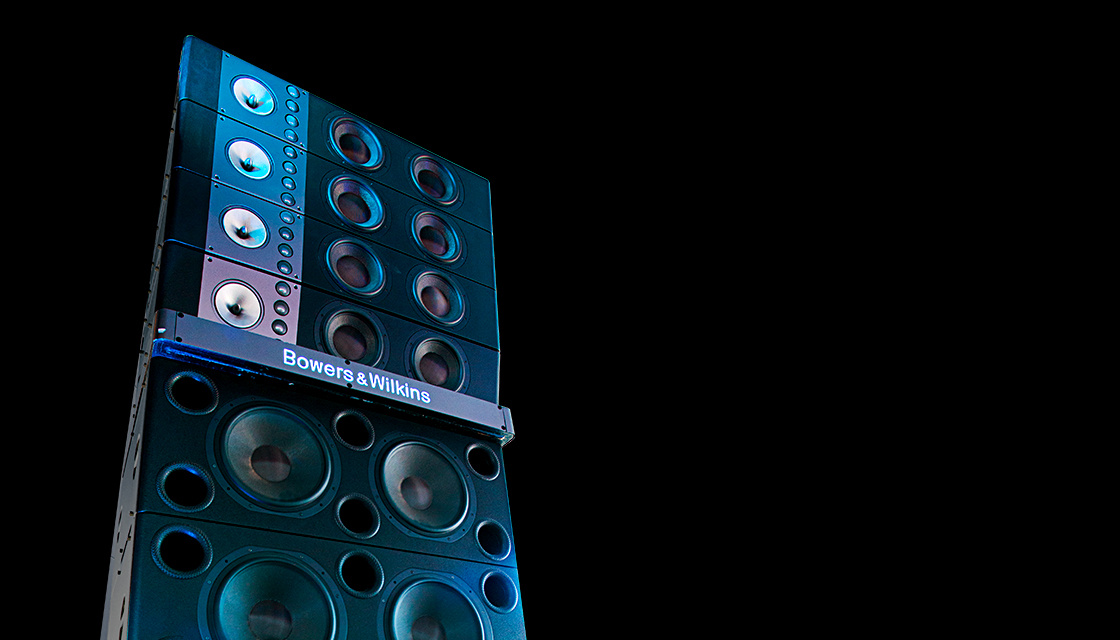
In total, the system includes 16 subwoofers and 16 satellites with a total RMS of 120 watts. Like the first “Wall of Sound”, speakers from 2 manufacturers were used to make a sound system, Rohacell dynamic heads were used for the LF and MF spectrum, tweeters are a proprietary development of Bowers & Wilkins and known for use in Bowers & Wilkins Nautilus. Total: 144 dynamic emitters.
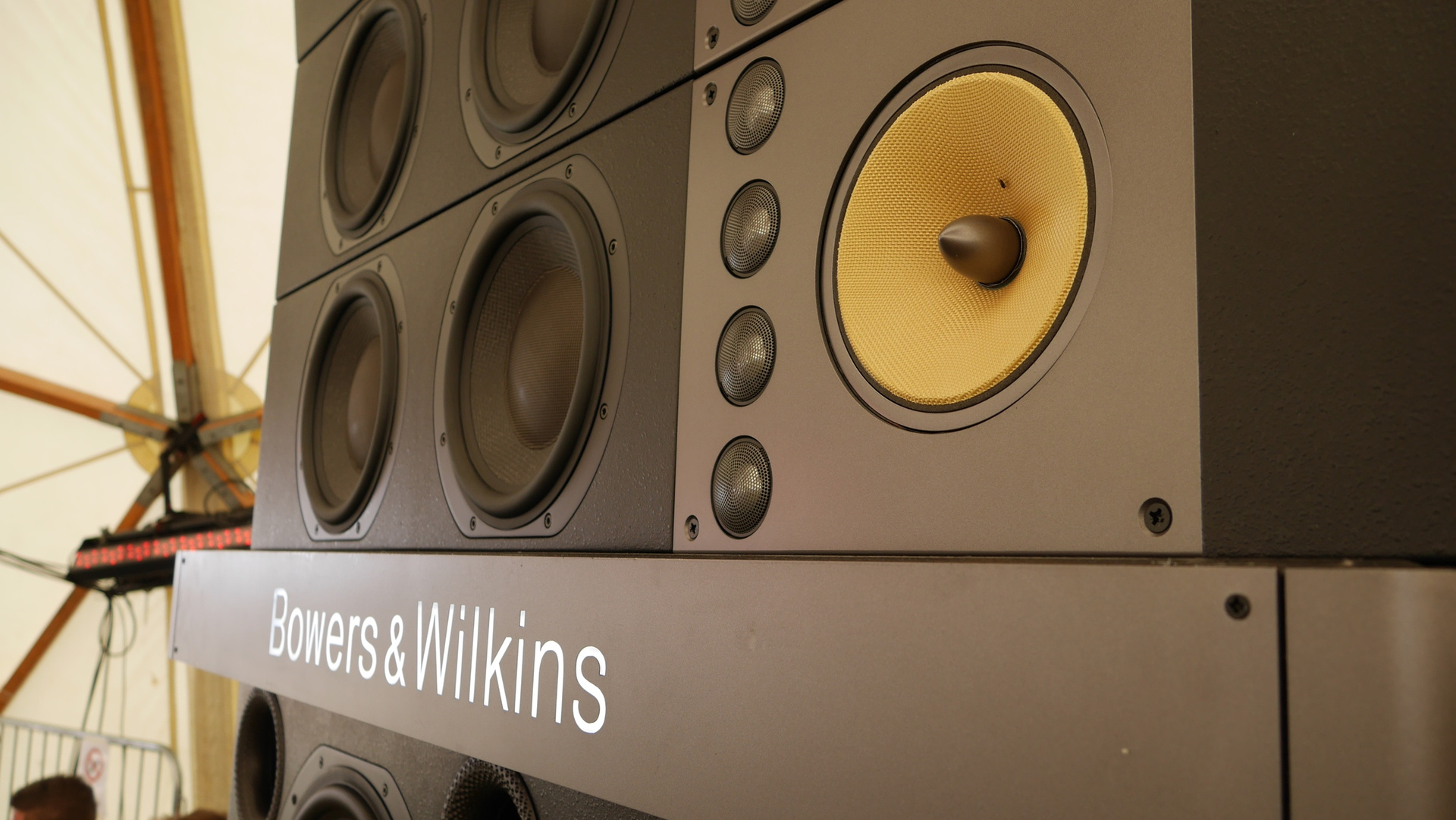
You can buy this soundmonster for this conceptual development in just 1 million Euros.
Massively unclaimed at concert venues since the early 80s, super-power acoustic structures have found use in the space industry. This is evidenced by the construction of such a system in the shipyards of the aviation company Lokheed Martin, when testing the Orion ship in 2011. The “sound wall” for space tests was installed in a special acoustic chamber, where it generated sound pressure of more than 150 dB, which is comparable to sound pressure when launching rocket engines during spacecraft launches.
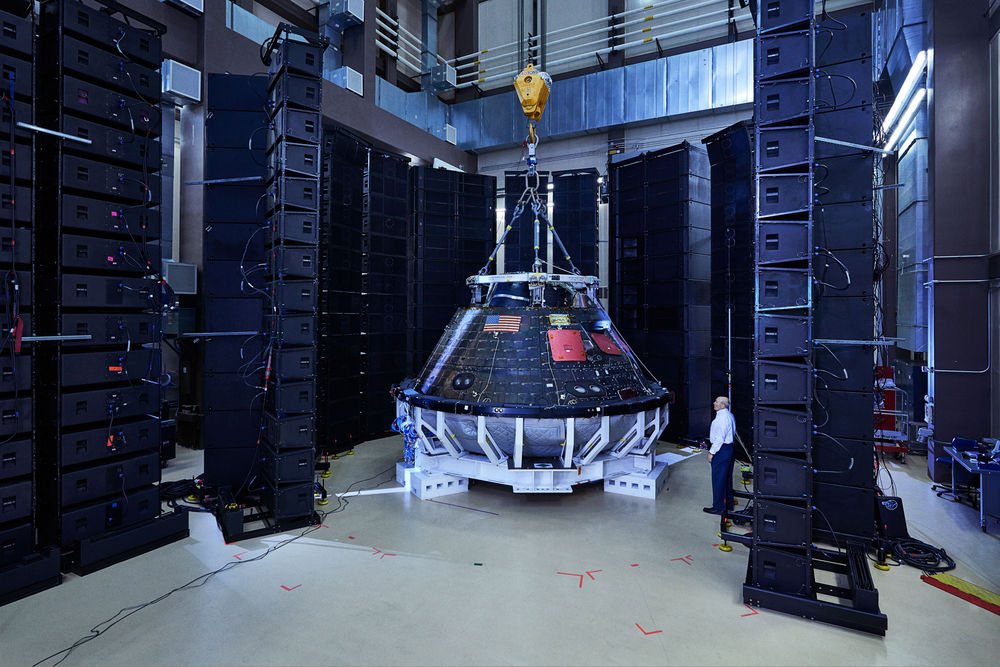
1500 test rooms were used to create a test bench. The working sound pressure for test “launches” is 143 dB (maximum exceeds 155).
The system reproduces the sound of real rocket engines, recorded with the help of 100 microphones, which makes it possible to accurately recreate the acoustic conditions at the launch site of the cosmodrome.
Despite some utopianism and irrationality of audiokollosov, they continue to find application not only in show business, but also in serious engineering developments. In one of the materials about the legendary amplifiers of the past and the present, I questioned the practical value of the Opera Only toroidal amplifier, however, having become more familiar with super-powerful sound systems, this monster no longer seems so useless.
In the publication used photographic materials: roniker.ru

Despite the concert impracticality, niches are still found for such giants. Gigantic audio equipment, combining a huge number of emitters and powerful amplifying devices, have enormous sound pressure. Today, striking the imagination of the townsfolk, audiomonstry build for various kinds of competitions (often in car audio), as exhibition concepts, surprising with its parameters, as well as for use in industrial testing.
In this post I will describe the history and current state of this segment of sound engineering.
How did the idea come about or what does LSD do with the sound engineer
One of the first acoustic superstructures is considered to be the wall of the sound of the Grateful Dead band, which first appeared on the band’s performance in 1973. As we noted at the beginning of the material, the acoustic design was developed by the sound engineer of the gang of Osley (Bear) Stenley during the period when this remarkable man intensively experimented with lysergic acid diethylamide, mescaline and other psychoactive substances. An interesting fact is that Medved was not only the group's sound engineer, but also a person who partially financed "grateful dead", and also supplied them with one of the "creative elixirs", the very LSD-25. The substance (remained semi-legal in the United States until 1975), an enterprising chemist-engineer himself produced, consumed and sold at a profit.
A prerequisite for the creation of a stage audiomonstra was the then-popular principle of studio recording with the same name “The Wall of Sound”, which was invented by another prominent figure in American sound engineering, sound producer and star killer Phil Spector. Recording the Beatles album “Let It Be”, Spector applied the original recording method, in which all instruments were recorded at once (instrument signals were fed to the recording room through the instrument room, and then recorded on a magnetic tape). Only Paul McCartney didn’t like the result, but he was impressed with the rest of The Beatles, the vast majority of sound engineers of that time. Among others was the Bear.

Phil Spector
The legend of “The Wall of Sound” says that in one of the psychiatric journeys of 1969 (held in Novato, California, where he rehearsed the band), at the height of the “enlightened” discussions about sound, Bear had a brilliant idea to repeat Spector's “Wall” effect on the stage site.

Grateful dead
It was like this, Bob Weir, Jerry Garcia and Phil Lesch, Medved and a few devoted admirers of Dead, gathered at the rehearsal base and began to discuss the useless possibilities of the sound equipment that existed then. As soon as the discussion "turned" in the direction of live performances, it dawned on Medved, who was silent before, interrupting the crowd, said:
“You know, the solution is in the sound system. She should stand behind the group. ”
At that moment, no one took the proposal seriously, but the principle itself, when listeners and musicians receive sound from one source, impressed the audience.
The first "Wall" and its possibilities
There is also a more prosaic version of the idea of creating "Wall of Sound". One of the objective prerequisites for creating your own concert sound system and building the "wall" was the unsuccessful performance of the band at the Woodstock Music & Art Fair festival, in the same 1969 year. Then the problems with the equipment significantly influenced the performance and the perception of the team by the public.

Did everything happen because of LSD-revelations of the Bear or as a result of analyzing the mistakes of the Woodstock engineers, but by 1972, Osley (the Bear) Stanley completed the design of the Wall. Rick Turner, Ron Vikershem and John Karl also took part in the development of the facility. By 1973, the year the Wall was erected.
Hulk RMS was equal to 26,400 watts. The Wall made it possible to create a sound pressure of 103 dB at a distance of ½ mile (0.8 km). The musicians performed in front of the wall and did not use monitors. Thus, as Bear intended, the sound was a single whole - the same for the people, in front of the stage and for the musicians on it. As if the participants of the collective have not deafened the mind, I will not apply, but the fact remains.

89 transistor (RMS each 300 W) and three tube (RMS - 350W) McIntosh amplifiers became the amplifier “core” systems. These were the legendary McIntosh MC-2300 (as a “stone” panoramic base) and the no less legendary McIntosh MC-3500 (as a “warm” lamp supplement).


The Walls cabinets also used 586 speakers manufactured by JBL , woofers (15 inches), low-pass signals (12 inches) and microwave frequencies (5 inches), as well as 54 Electrovoice tweeters. All this splendor was loaded with 11 independent amplification channels, 2.4 kW each. The four-band separation of the signal, like some modern hi-fi speakers, began before amplification, i.e. actually used the active crossover circuit.

To prevent microphone-to-speaker feedback and the formation of a natural reverberation effect, the concert platform was equipped with low-sensitivity duplicated condenser microphones (the backup microphone was placed 60 mm from the main one and rotated 180 degrees in phase to the speakers. The vocalist had to sing as close as possible to this the spark so as not to increase the sensitivity. According to the musicians, this decision was more tedious than using a traditional dynamic microphone (perhaps This is the only drawback of the system, which team members noted.

The Wall of Sound at the time of its appearance was the most powerful concert speaker system on the planet. For comparison, the legendary The Beatles used for performances concert systems with a capacity of not more than 800 W, and at the largest for that time rock festival Woodstock Music & Art Fair until the end of the 70s, the power of the sound system did not exceed 4 kW. After its appearance, the Wall improved and grew, the building reached a height of 10 meters and weighed several hundred tons by the end of 1976.
The “Wall of Sound” was used by the “dead” until the early 80s, when the group found its use impractical, due to the appearance of more sophisticated and convenient solutions.
Monster sound for rock monsters
Despite the almost universal rejection of gigantic sound structures in the 80s, some events simply could not do without them. This happened to the Monsters of Rock festival in Derbyshire (United Kingdom), which was held from August 19th to 22nd, 1988. The festival participants, including Metallica, Van Halen, KISS, David Lee Roth, Megadeth, Guns `N` Roses, Helloween and Iron Maiden, wanted to perform really powerfully in front of a large audience, 107,000 spectators came to the festival.

For this, an acoustic structure of 45 (150 feet) length and 10 meters (35 feet) height was built, which had a total RMS of 523,000 W (indicated not by the maximum, but by the software operating power) and provided a sound pressure of 100 dB at a distance of 1.7 miles away Measurements of SPL (sound pressure) during the Iron Maiden performance showed a value from 118 dB to 124 dB at a distance of 90 m from the sound source, peak values reaching 140 dB.

The system includes - 300 TMS-3 cabinets and 60 TSW-124 subwoofers, loaded with 460 separate QSC and BSS amplification channels, divided into 4 bands. All speakers were manufactured by Turbosound. More than half of the equipment belonged to the Iron Maiden group. The logical result was the introduction in 1990 of this hulk into the Guinness Book of Records, as the biggest sound system ever sounding.

Concept DESPACIO from McIntosh and James Murphy, who beat the records of the 70s
One of the prominent developments in the field of super-powerful sound systems a few years ago appeared at the famous American company McIntosh , as is the case with the wall of sound, the DESPACIO project was the fruit of a collaboration of engineers and musicians. The next colossus sound was designed by James Electroclashes from the LCD Soundsystem electric clash project in collaboration with the sound engineer from Jordan Acoustics (McIntosh distributor in the USA).

According to the authors of the project, they developed a sound system with a total power of 55,000 watts to preserve the old traditions of live performances. Murphy and Mac engineers emphasize that they have doubled the power of the Wall of Sound of the Greatful Dead. The system consists of 7 cabinet racks, about 4 meters high. The total mass of the gain system is 4.5 tons. Underlining the conceptual continuity with the “dead”, McIntosh held the first presentations of the system at New Century Hall, which is decorated in the style of the late 60s and early 70s.
Society of Sound - Bowers & Wilkins exhibition concept
At WOMAD 2014, true high end legends, Bowers & Wilkins presented their heavy-duty building with the pathetic name of Society of Sound. The system was designed on the basis of a combination of classic bass-reflex subwoofers with three-way cabinets (Mid-bass, MF, HF) made of birch plywood.

In total, the system includes 16 subwoofers and 16 satellites with a total RMS of 120 watts. Like the first “Wall of Sound”, speakers from 2 manufacturers were used to make a sound system, Rohacell dynamic heads were used for the LF and MF spectrum, tweeters are a proprietary development of Bowers & Wilkins and known for use in Bowers & Wilkins Nautilus. Total: 144 dynamic emitters.

You can buy this sound
Orion Tests at Lokheed Martin
Massively unclaimed at concert venues since the early 80s, super-power acoustic structures have found use in the space industry. This is evidenced by the construction of such a system in the shipyards of the aviation company Lokheed Martin, when testing the Orion ship in 2011. The “sound wall” for space tests was installed in a special acoustic chamber, where it generated sound pressure of more than 150 dB, which is comparable to sound pressure when launching rocket engines during spacecraft launches.

1500 test rooms were used to create a test bench. The working sound pressure for test “launches” is 143 dB (maximum exceeds 155).
The system reproduces the sound of real rocket engines, recorded with the help of 100 microphones, which makes it possible to accurately recreate the acoustic conditions at the launch site of the cosmodrome.
Total
Despite some utopianism and irrationality of audiokollosov, they continue to find application not only in show business, but also in serious engineering developments. In one of the materials about the legendary amplifiers of the past and the present, I questioned the practical value of the Opera Only toroidal amplifier, however, having become more familiar with super-powerful sound systems, this monster no longer seems so useless.
In the publication used photographic materials: roniker.ru
All Articles